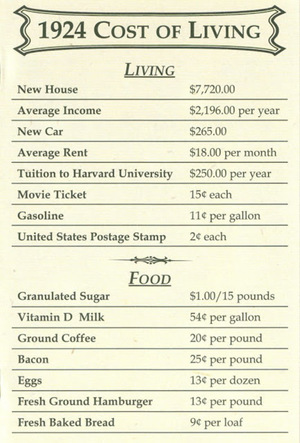The Remarkable Story of the Black Patch Tobacco Wars (6 Photos)
From 1904-1909, a period of great violence broke out in the dark tobacco region of Kentucky and Tennessee. These later became known as the Black Patch Tobacco Wars. This article and photos tell this unique story...

A small group of farmers protect their crop in Southwest Kentucky around 1906
In Southwest and Northwestern Tennessee, there were around 30 counties that comprised what was called the "Black Patch" because they specialized in making Dark Fired Tobacco, which was cured by wood smoke and namely used in chewing and pipe tobacco. At the start of the 1900s, this area was the main worldwide supplier for this type of tobacco, which made it extremely valuable.
Problems began to arise when the primary buyer -- American Tobacco Company -- capped prices and put the local farmers to the edge of poverty. Given that most of the farmers controlled small patches, they had little leverage. On September 24, 1904, the farmers decided to organize: 5,000 locals joined a meeting in Guthrie, Kentucky and they formed the Dark Tobacco District Planters' Protective Association of Kentucky and Tennessee (PPA). Their initial plan was to stockpile and withhold their product collectively until ATC agreed to pay higher prices.

A photo of the PPA parade in Guthrie, Kentucky
Sadly, this didn't work, namely due to one provision in the PPA charter that encouraged members to use "influence and strong endeavor" to persuade non-members to join the cause. The buyer groups fought back by offering hugely elevated prices for the tobacco sold by non-members. This created intense tension as members faced even worse financial hardship while their holdout neighbors began reaping huge profits. PPA members had expected this boycott to result in swift action, and by mid 1905, tensions were on the rise and about to blow.
In October 1905, 32 members of the Robertson County Branch of the PPA got together and formed a committee to visit non-members (whom they termed "hillbillies") to apply some light pressure. They called themselves the "Possum Hunters", and while most of these visits remained peaceful, some incited fighting and this would be the official start of the Black Patch Wars.

At this time, Dr. David Amoss, a farmer and former drillmaster from Cobb, Kentucky, began to organize members of the PPA following the military training he had received in Hopkinsville, Kentucky. The newly-trained men then conducted night-time raids where they would destroy the barns, tobacco fields, and equipment of the holdouts. These campaigns were initially successful and by mid 1906, these raiders who called themselves the "Silent Brigade" numbered nearly 10,000.
These men became known in the press as "The Night Riders" and their campaigns grew in scale toward the end of 1906 as they destroyed entire tobacco warehouses. Among some of their more famous raids:
- Raid on Princeton, Kentucky: On December 1, 1906, small groups of men rode in to town and instructed all townspeople to stay indoors. The Raiders moved on to two of the largest tobacco warehouses in the South and lined them with dynamite and kerosene. By early-morning, 75 tons of non-PPA tobacco had been destroyed.
- Raid on Hopkinsville, Kentucky: On January 4, 1907, the mayor of nearby Hopkinsville received a call that the Raiders were coming. They had been expecting this, however, and had a plan in place. Though the Raiders were prepared, they held off on aggressions for nearly an entire year. On December 7, 1907, nearly 500 men made their approach and within minutes had seized control of the city. They destroyed all the warehouses, some of the rail depot, and sadly killed one of the locals. As a result, the government deployed the Kentucky Militia to intervene and from that moment, no further raids would occur where troops were stationed.
- Raids in Crittenden County, Kentucky: While the PPA worked in smaller groups to continue to try to persuade non-members to join, the Night Raiders resumed their activities in Russellville and Crittenden County. On February 4, 1908, they raided two small towns in Crittenden County and burned all tobacco barns and warehouses.

The Wars Come to an End and the ATC Gets Dismantled
In April 1908, almost two years after their first raid, the Night Riders got a taste of their own medicine as the Kentucky National Guard raided and arrested most of the leaders of the rogue group. This destroyed all organization, lines of communication, and leadership for the group, but all of their work had not been for naught.
The US Supreme Court in 1910 ruled that the ATC was indeed a monopoly and must be dismantled. As a result, new entrants came in and farmers once again received much higher, competitive prices. Over the years, many of the damaged relationships among neighbors were repaired as prosperity became more equalized across the region.
It was a dark time for that area of the South, but ultimately served to set the foundation for an industry that would thrive and support thousands of families in Kentucky and Tennessee for the next 100 years.
If you liked this story, hit "Share" below to pass it on...
